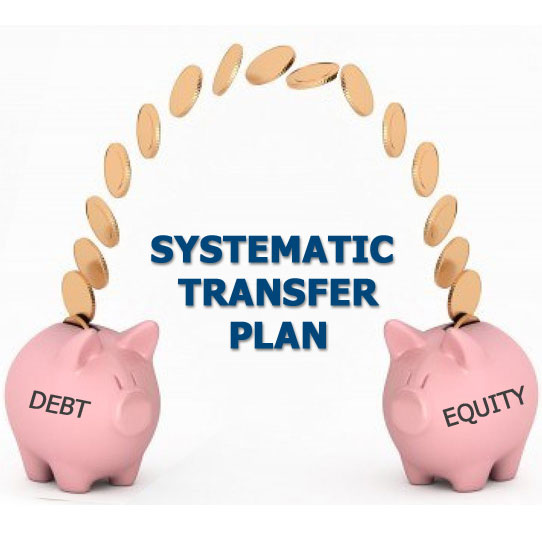The quarter of January – March (popularly known in financial circles as the JFM quarter) is full of panic and anxiety for tax payers. Last minute investments need to be done,
investment proofs need to compiled in one folder, PPF passbooks need to be updated etc. In our haste to organize everything, at times we forget that tax planning is a part of the overall financial planning for our goals and dreams. As a result, we end up investing in products which may help us claim tax benefits upto Rs. 1.50 Lac, but give us returns less than inflation.
Through this article, we would like to suggest how you can invest wisely to save taxes and yet not go off track on your financial planning.
LIFE INSURANCE :
If you are married, with or without kids or have retired parents, a life insurance policy is an absolute necessity. The premium payable on the policy qualifies for a tax benefit subject to it being not more than 1/10th of the sum assured or cover. For example, if the sum assured is 10 Lacs, the premium cannnot exceed Rs. 1 Lac. Term plan is the best option to consider as the premium paid is to cover the cost of insurance with no returns attached. The biggest USP of a term plan is that it can offer a high sum assured for a very low cost. An amount of Rs. 1200 p.m. can get you a 25 year term plan for Rs. 1 crore. This is less than what a movie outing will cost a family with 2 children. On the death of the life insured, the nominee gets a lump sum amount of Rs. 1 crore. There have been some innovations on the payment of the death benefit also. Companies have started offering the option of splitting the death benefit into a lump sum and regular monthly / quarterly payments or entirely regular payments as per the frequency defined. These payments can be taken into account while preparing retirement cash flow planning in case of death of the life insured.
EQUITY-LINKED TAX SAVING SCHEMES (ELSS) :
If you looking to create long term wealth for yourself and family, then equity is a must have in your portfolio. If you can also get tax benefits, then the overall benefit is magnified. As the name suggests, an ELSS is a mutual fund scheme that invests your money into equities across sectors and industries with the help of a professional fund manager. It comes with a lockin of 3 years which is one of the shortest tenures among all the options discussed here.
EMPLOYEES’ PROVIDENT FUND (EPF) :
EPF is available to salaried individuals only and is good vehicle for retirement planning due to limited withdrawal options. On a monthly basis, 12% of your salary alongwith an equal contribtion from the employer is deposited in your EPF a/c which earns interest as declared by the Employees Provident Fund Organisation (EPFO). The interest rate for FY 2014-15 is 8.75% p.a. Your 12% monthly contribtion qualifies for a deduction of Rs. 1.50 Lac from your gross total income. Your EPF contribtions and interest earned on it are totally tax free if it withdrawn after 5 years.
As per income tax rules, EPF is an exempt-exempt-exempt (EEE) product. EEE means that the investment made qualifies for a tax deduction so no tax is to be paid on that amount. The interest earned on the investment is also tax free and the final corpus amount that you withdraw on maturity is also tax free.
PUBLIC PROVIDENT FUND (PPF) :
Unlike EPF, PPF is available to the general public – whether salaried or not. It is a 15 year lock-in product with an option to renew in blocks of 5 years. Minimum investment is Rs. 500 and maximum is Rs. 1.50 lakh in a financial year. PPF a/c can also be opened for a minor but the combined investments in both accounts (parent + minor) cannot exceed Rs. 1.50 Lac. Interest on the PPF a/c is declared every year in April by the government and is calculated as 0.25% above the 10 year G-Sec yield. The interest rate for F.Y. 2014-15 is 8.70%. The interest is compounded annually but calculation is done on a monthly basis. A withdrawal option is available after the 6th year. Loan can also be taken against the PPF a/c. PPF is also a EEE product.
NATIONAL PENSION SCHEME (NPS) :
NPS is a defined contribution based pension scheme that was launched by the government in January 2004. It is mandatory for central government employees (except armed forces) appointed after January 1st, 2004. It is open to all Indian citizens between the ages of 18 and 55. The launch of NPS was a precursor to instituting pension reforms in India as earlier the government offered assured benefits. The scheme is structured into 2 tiers:
- Tier 1: No premature withdrawals allowed before the age of 60
- Tier 2: Withdrawals allowed
Minimum investment is Rs. 6,000 in a financial year. The investment pattern is split into 3 asset classes:
- Equities with maximum cap of 50%
- Government Securities with minimum cap of 20%
- Fixed Income Securities with minimum cap of 10%
The fund management cost of NPS is 0.25%, which is one of the lowest in the industry. The contribution qualifies for a tax deduction upto Rs. 1.50 Lac. On maturity, 60% of the corpus can be withdrawn as a lumpsum and the balance 40% has to go towards buying an annuity. NPS is currently an EET product but this may soon change soon to EEE as per the recommendations of the Pension Fund Regulatory and Development Authority Act, 2013.
FIVE-YEAR FIXED DEPOSITS (FDs) WITH BANKS :
If you are looking for guaranteed returns or are in the lower tax bracket, this could be a good option to consider. Interest earned on the fixed deposit is subject to TDS.

AT A GLANCE :
While selecting these tax saving options, it is important to keep in mind the following things:
- Your Age
- Time Horizon for Investment
- Your Goals
A thumb rule usually followed for equity investments is 100 minus your age should be the allocation to equities. Those who are in the 20s and 30s, can afford to have equity allocation of as high a 80%-90%. As you grow older, your allocation to equities should decrease and allocation to safer investments should increase. When you retire at the age of 55 or 60, your allocation to equities will still bea respectable 40% – 45%.
Though the JFM quarter is full of deadlines, this is no reason to make hasty investments for saving taxes and derailing your financial planning goals.
We hope this article will help you to make more prudent investment choices.




 countries in terms of percentage of elderly living in poverty at 21.8%. Retirement planning is clearly the most overlooked and avoided subject in any conversation among 30 year old salaried individuals. But as responsible and mature individuals, we have to take ownership of the fact that one day our salaries will stop and we will have to depend on our investments to fund our daily expenses. The sooner we accept this fact and start planning for our retirement, the more peaceful and stress free will be our retired lives. The cost of delaying retirement planning is best explained in the following example:
countries in terms of percentage of elderly living in poverty at 21.8%. Retirement planning is clearly the most overlooked and avoided subject in any conversation among 30 year old salaried individuals. But as responsible and mature individuals, we have to take ownership of the fact that one day our salaries will stop and we will have to depend on our investments to fund our daily expenses. The sooner we accept this fact and start planning for our retirement, the more peaceful and stress free will be our retired lives. The cost of delaying retirement planning is best explained in the following example: For the average salaried person, this is a big budget goal due to the high prices of houses pan India. Home loans help to bridge the gap between the person’s current savings and the cost of the house. Ideally, a house should be bought in the early part of a person’s career as it typically takes 15 – 20 years to pay off the home loan. It is important to create a corpus which is approx. 20% of the cost of the house as this is the down payment that has to be provided by the home buyer. The rest of the amount will be funded by the bank. Balanced and income funds can be good investment options for creating the corpus for the down payment.
For the average salaried person, this is a big budget goal due to the high prices of houses pan India. Home loans help to bridge the gap between the person’s current savings and the cost of the house. Ideally, a house should be bought in the early part of a person’s career as it typically takes 15 – 20 years to pay off the home loan. It is important to create a corpus which is approx. 20% of the cost of the house as this is the down payment that has to be provided by the home buyer. The rest of the amount will be funded by the bank. Balanced and income funds can be good investment options for creating the corpus for the down payment.

 As can be seen from the above graph just to maintain the same standard of living for a family with monthly expense of .25000 one would require 1 lakh per month after 20 years. Again this is just with an assumed inflation of 7%.
As can be seen from the above graph just to maintain the same standard of living for a family with monthly expense of .25000 one would require 1 lakh per month after 20 years. Again this is just with an assumed inflation of 7%.


